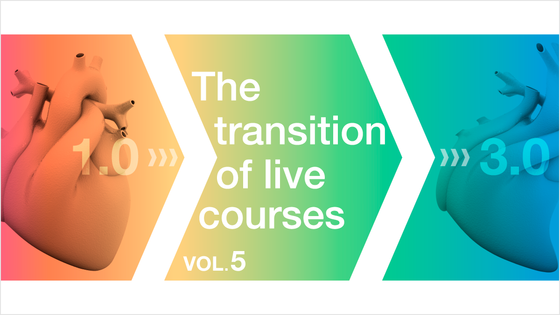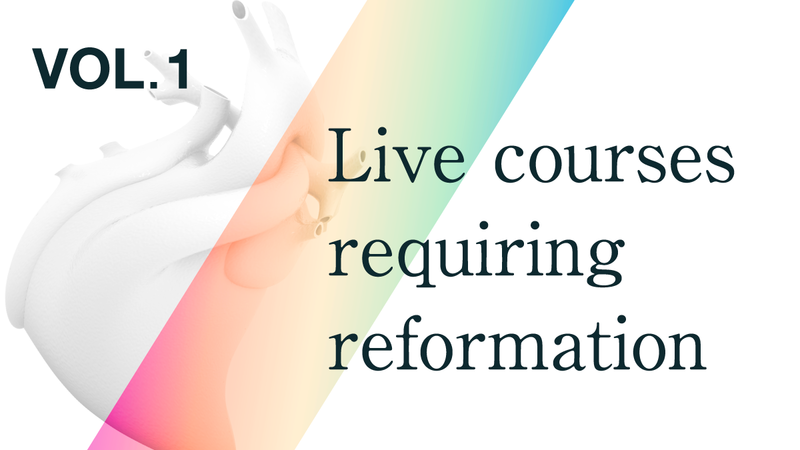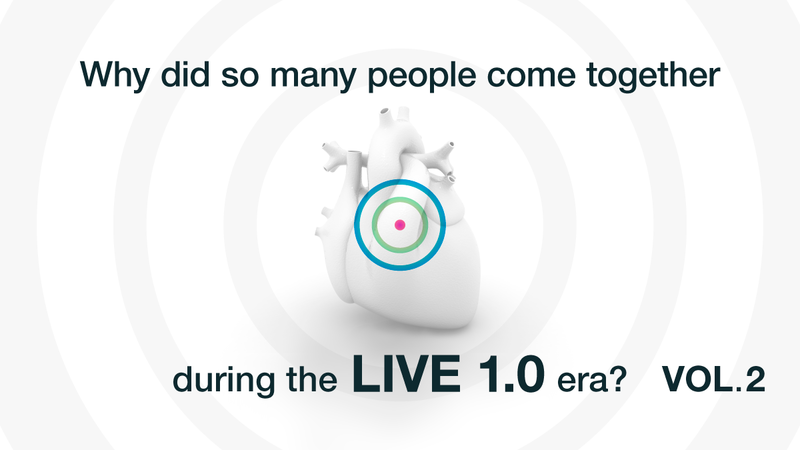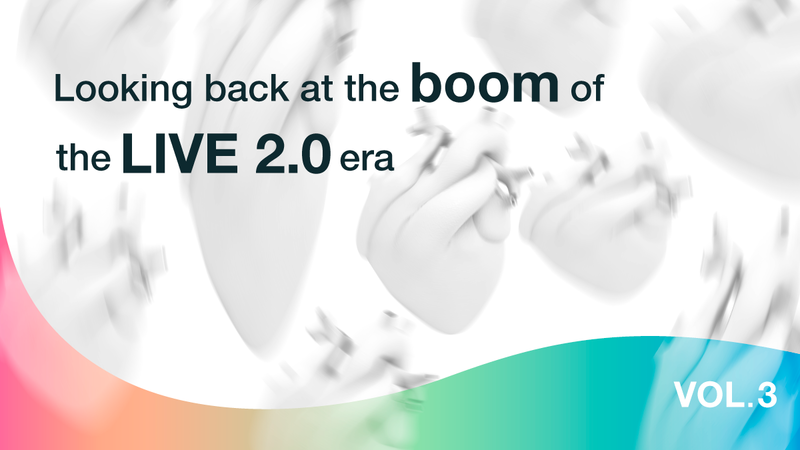At that time, there were only a limited number of meetings for cardiologists involved in catheterization, so numerous participants came from all over the country. The catheterization market was still in its growth phase, and many domestic and foreign companies were entering the market, so there were numerous sponsorships from them. These companies were investing large sums of money in order to get their products shown during live courses, where device spillover effects were high.
Most of the organizers of the live courses inaugurated in the Live 2.0 era were cardiologists who were taught by Dr. Nobuyoshi. They had come to hold the show locally as a way to improve the level of local catheterization skills, as well as to unite all the local cardiologists, and to ensure that they were not ostracized from the rest of the community. This was a time when digitalization was becoming more prevalent and the cost of broadcasting live courses was beginning to drop. From hospitals to local hotels and civic centers, these live courses brought medical professionals and healthcare providers involved in local cardiovascular care together. Although mergers and acquisitions of companies were common during this period, the larger scale of the companies provided them with the resources to invest in live courses.
The Live 3.0 era, which was when reimbursement prices for devices used in PCI began to fall, brought together like-minded cardiologists everywhere from various regions to develop what we now refer to as the live course. Digitization had further made live courses more accessible and reduced relay costs. The organizers of Live 3.0 were primarily the next generation of cardiologists, and they devised ways to make the live course cheaper, including relaying it to a local conference facility. The purpose of the live course has changed over time, becoming more of a gathering of like-minded colleagues than an educational component of learning from individual procedures, so as gatherings become smaller and smaller, fewer people attended, and fewer companies sponsored the events. The scene at the venues of the live courses, which took place every weekend around the country, was very different from that of Live 1.0 and 2.0.
Table 1 - Transition to the Live 3.0 Era
| Period |
Live 1.0
(1983 - 1995)
|
Live 2.0
(1996 - 2005)
|
Live 3.0
(2006 - 2019)
|
| Organizer |
Celebrity cardiologists at the time |
The leading cardiologist in that area |
Various cardiologists |
| Objective |
To promote the use of catheterization throughout the country |
To improve the technical abilities of cardiologists |
To establish treatment for complex lesions |
| Cost of Live Course |
High |
Mid-high |
Low |
| No. of Participants (At Peak) |
Large turnout |
Medium turnout |
Low turnout |
| Participant |
Cardiologists nationwide |
Local cardiologists |
Cardiologists who side with the objectives |
| Corporate Sponsor |
Many |
Some |
Few |
| Location |
Large scale convention halls (International Conference Hall, International Exhibition Hall, etc.) |
Hotels, conference facilities, civic centers |
Hotels, conference facilities, medical office meeting rooms, rental meeting rooms |
| Holding Period |
2-3 days |
2 days |
1-2 days |
| Faculty Size |
200+ |
100-200 people |
Several dozen |
| Operation led by |
Organizers |
Organizers and celebrity cardiologists |
Organizers and guest cardiologists from other areas |
About the Author: Satoru Hashimoto
After graduating from Bellevue University in Nebraska, USA, in 1994, Mr. Hashimoto returned to Japan to work for a foreign healthcare consulting company before joining Johnson & Johnson. After a career in sales and marketing in the field of catheter intervention, he established TCROSS Co., Ltd. in 2005. He enrolled in the Graduate School of Management, GLOBIS University in 2019 and graduated in 2021 with an MBA (Master of Business Administration). He is a full member of the Japan Science and Technology (JST) Journalists Conference and the International Science Writers Association (ISWA).





